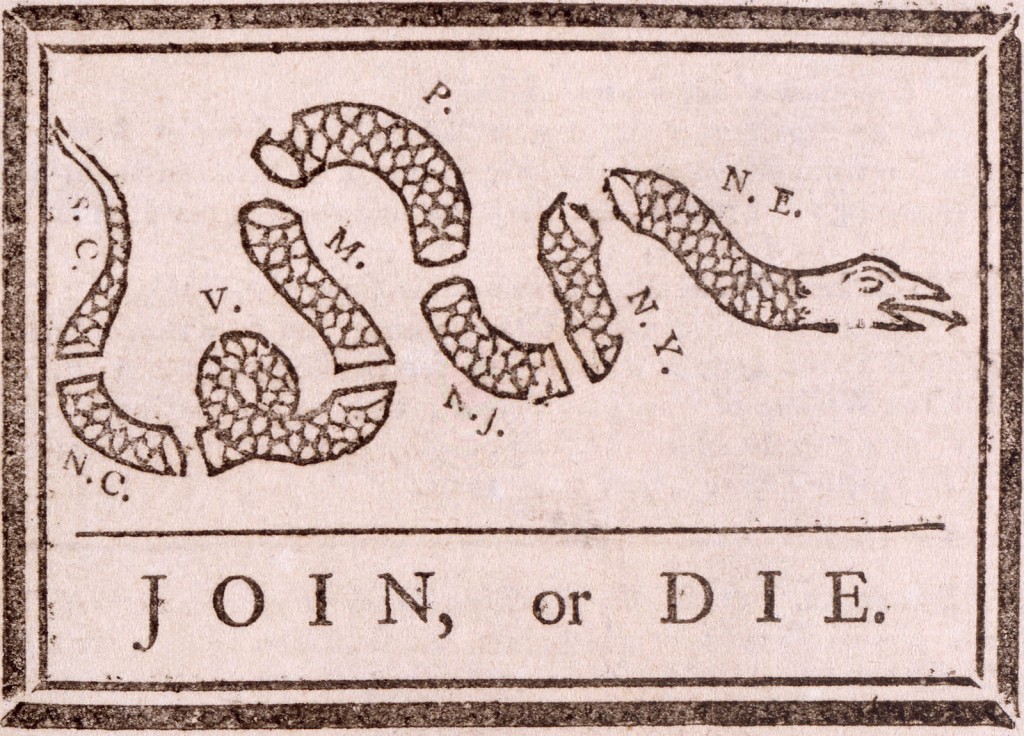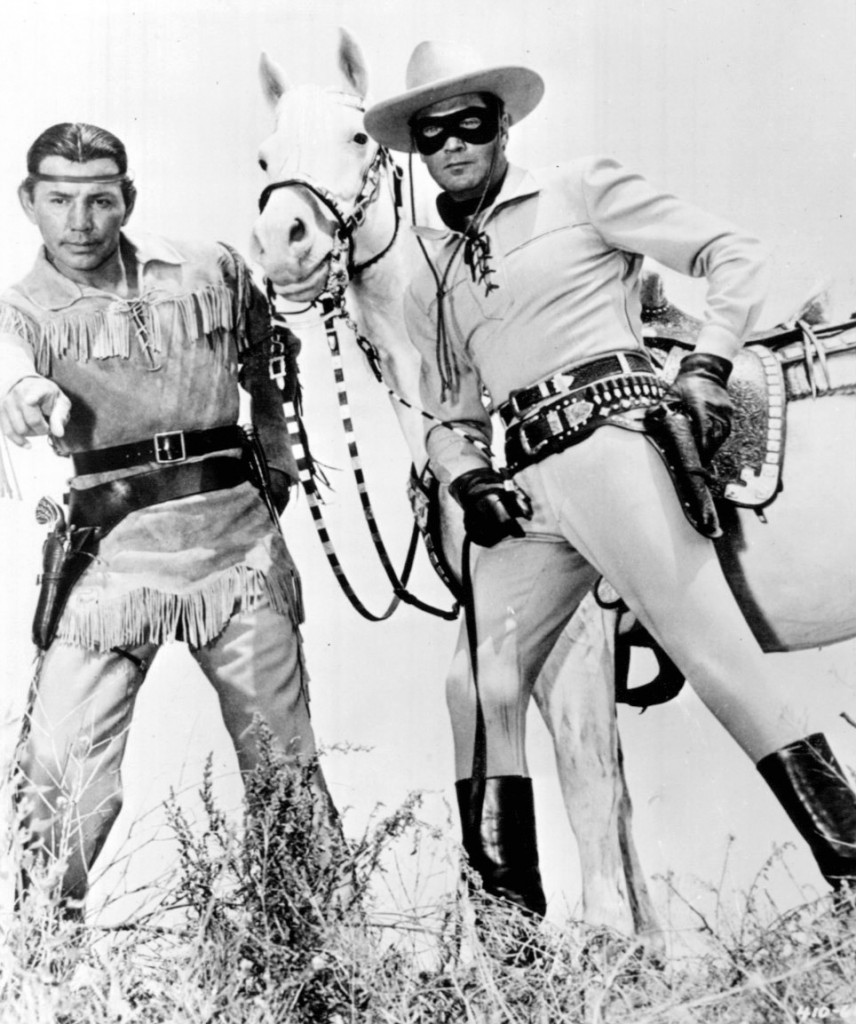2.1 Mass Media and Its Messages
When media consumers think of media messages, they may think of televised public service announcements or political advertisements. These obvious examples provide a venue for the transfer of a message through a medium, whether that message is a plea for fire safety or the statement of a political position. But what about more abstract political advertisements that simply show the logo of a candidate and a few simple words? Media messages can range from overt statements to vague expressions of cultural values.
Disagreements over the content of media messages certainly exist. Consider the common allegations of political bias against various news organizations. During the 2008 run-up to the presidential election, ABC was accused of left-wing political bias in Charlie Gibson’s interview of Sarah Palin, then a candidate for Vice President of the United States. Fox News commentator Bill O’Reilly was accused of right-wing bias in his interviews with President Obama on the O’Reilly Factor. More recently, in 2020 President Trump accused the social media platform Twitter of political bias after it began fact-checking his tweets. Accusations of hidden messages or agenda-driven content have always been an issue in the media, but as the presence of media grows, the debate concerning media messages increases. This dialogue is an important one; after all, mass media have long been used to persuade. Many modern persuasive techniques stem from the use of media as a propaganda tool. The role of propaganda and persuasion in the mass media is a good place to start when considering various types of media effects.
Propaganda and Persuasion
Encyclopedia Britannica defines propaganda simply as the “manipulation of information to influence public opinion (Britannica Concise Encyclopedia).” This definition works well for this discussion because the study and use of propaganda has had an enormous influence on the role of persuasion in modern mass media. Media theorists Herman and Chomsky (2002, p. 1) make clear that “the mass media serve as a system for communicating messages and symbols to the general populace” that is marked by inequities in power and wealth.. In his book The Creation of the Media, Paul Starr argues that the United States, as a liberal democracy, has favored employing an independent press as a public guardian, thus putting the media in an inherently political position (Starr, 2004). The United States—in contrast to other nations where media are held in check—has encouraged an independent commercial press and thus given the powers of propaganda and persuasion to the public (Starr, 2004).

Like any type of communication, propaganda is not inherently good or bad. Whether propaganda has a positive or negative effect on society and culture depends on the motivations of those who use it. People promoting movements as wide-ranging as Christianity, the American Revolution, and the communist revolutions of the 20th century have all used propaganda to disseminate their messages (Jowett & O’Donnell, 2006). Newspapers and pamphlets that glorified the sacrifices at Lexington and Concord and trumpeted the victories of George Washington’s army greatly aided the American Revolution. For example, Benjamin Franklin’s famous illustration of a severed snake with the caption “Join or Die” serves as an early testament to the power and use of print propaganda (Jowett & O’Donnell, 2006).
The penny press made newspapers accessible to a mass audience and became a force for social cohesion during the 1830s (Jowett & O’Donnell, 2006). Magazines adopted a similar format later in the 19th century, and print media’s political and social power rose. In an infamous example of the new power of print media, some newspapers encouraged the Spanish-American War of 1898 by fabricating stories of Spanish atrocities and sabotage (Jowett & O’Donnell, 2006). For example, after the USS Maine sunk off the coast of Havana, Cuba, some newspapers blamed the Spanish—even though there was no evidence—fueling the public’s desire for war with Spain.
The present-day, pejorative connotation of propaganda stems from the full utilization of mass media by World War I–era governments to motivate the citizenry of many countries to go to war, a practice that has continued through the U.S.-Iraq conflict. Some media outlets characterized the war as a global fight between Anglo civilization and Prussian barbarianism. Although some of those fighting the war had little understanding of the political motivations behind it, wartime propaganda convinced them to enlist (Miller, 2005). World War I legitimized the advertising profession in the minds of government and corporate leaders because its techniques were useful in patriotic propaganda campaigns. Corporations quickly adapted to this development and created an advertising boom in the 1920s by using World War I propaganda techniques to sell products (Miller, 2005).
In modern society, the persuasive power of the mass media is well known. Governments, corporations, nonprofit organizations, and political campaigns rely on both new and old media to create messages and to send them to the general public. The comparatively unregulated nature of U.S. media has made, for better or worse, a society in which the tools of public persuasion are available to everyone.
Media and Behavior
Although the mass media send messages created specifically for public consumption, they also convey messages that are not properly defined as propaganda or persuasion. Some argue that these messages influence behavior, especially the behavior of young people (Beatty, 2006). Violent, sexual, and compulsive behaviors have been linked to media consumption and thus raise important questions about the effects of media on culture.
Violence and the Media
On April 20, 1999, students Eric Harris and Dylan Klebold entered their Denver-area high school, Columbine High School, armed with semiautomatic weapons and explosives. Over the next few hours, the pair killed 12 classmates and one faculty member before committing suicide (Lamb, 2008). The tragedy and its aftermath captured national attention, and in the weeks following the Columbine High School shootings, politicians and pundits worked to assign blame. Their targets ranged from the makers of the first-person shooter video game Doom to the Hollywood studios responsible for The Matrix (Brook, 1999).
However, in the years since the massacre, research has revealed that the perpetrators were actually attempting a terrorist bombing rather than a first-person shooter style rampage (Toppo, 1999). But did violent video games so desensitize the two teenagers to violence that they could contemplate such a plan? Did movies that glorify violent solutions create a culture that would encourage people to consider such methods? Because modern culture is so immersed in media, the issue becomes a particularly complex one, and it can be difficult to understand the types of effects that violent media produce.

A number of studies have verified certain connections between violent video games and violent behavior in young people. For example, studies have found that some young people who play violent video games reported angry thoughts and aggressive feelings immediately after playing. Other studies, such as one conducted by Dr. Chris A. Anderson and others, point to correlations between the amount of time spent playing violent video games and increased incidence of aggression (Anderson, 2003). However, these studies do not prove that video games cause violence. Video game defenders argue that violent people can be drawn to violent games, and they point to lower overall incidence of youth violence in recent years compared to past decades (Adams, 2010). Other researchers admit that individuals prone to violent acts are indeed drawn to violent media; however, they claim that by keeping these individuals in a movie theater or at home, violent media have actually contributed to a reduction in violent social acts (Goodman, 2008).
Whether violent media actually cause violence remains unknown, but unquestionably these forms of media send an emotional message to which individuals respond. Media messages are not limited to overt statements; they can also use emotions, such as fear, love, happiness, and depression. These emotional reactions partially account for the intense power of media in our culture.
Sex and the Media
In many types of media, sexual content—and its strong emotional message—can be prolific. A study by researchers at the University of North Carolina entitled “Sexy Media Matter: Exposure to Sexual Content in Music, Movies, Television, and Magazines Predicts Black and White Adolescents’ Sexual Behavior” found that young people with heavy exposure to sexually-themed media ranging from music to movies are twice as likely to engage in early sexual behavior as young people with light exposure. Although the study does not prove a conclusive link between sexual behavior and sexually oriented media, researchers concluded that media acted as an influential source of information about sex for these youth groups (Dohney, 2006). Researcher Jane Brown thinks part of the reason children watch sexual content is related to puberty and their desire to learn about sex. While many parents are hesitant to discuss sex with their children, the media can act like a “super peer,” providing information in movies, television, music, and magazines (Dohney, 2006).
Cultural Messages and the Media
The media sends messages that reinforce cultural values. These values are perhaps most visible in celebrities and the roles that they adopt. Actors such as John Wayne and Marilyn Monroe came to represent aspects of masculinity and femininity that were adopted into mainstream culture during the mid-20th century. Throughout the 1990s, basketball player Michael Jordan appeared in television, film, magazines, and advertising campaigns as a model of athleticism and willpower. Singers such as Bob Dylan have represented a sense of freedom and rebellion against mainstream culture.

Although many consider celebrity culture superficial and a poor reflection of a country’s values, not all celebrities are simply entertainers. Civil rights leaders, social reformers, and other famous public figures have come to represent important cultural accomplishments and advancements through their representations in the media. When images of Abraham Lincoln or Susan B. Anthony appear in the media, they resonate with cultural and historical themes greatly separated from mere fame.
Celebrities can also reinforce cultural stereotypes that marginalize certain groups. Television and magazines from the mid-20th century often portrayed women in a submissive, domestic role, both reflecting and reinforcing the cultural limitations imposed on women at the time. Advertising icons developed during the early 20th century, such as Aunt Jemima and the Cream of Wheat chef, similarly reflected and reinforced a submissive, domestic servant role for African Americans. Other famous stereotypes—such as the Lone Ranger’s Native American sidekick, Tonto, or Mickey Rooney’s Mr. Yunioshi role in Breakfast at Tiffany’s—also reinforced American preconceptions about ethnic predispositions and capabilities.
Whether actual or fictional, celebrities and their assumed roles send a number of different messages about cultural values. They can promote courageous truth telling, hide and prolong social problems, or provide a concrete example of an abstract cultural value.
New Media and Society
New media—the Internet and other digital forms of communication—have had a large effect on society. This communication and information revolution has created a great deal of anguish about digital literacy and other issues that inevitably accompany such a social change. In his book on technology and communication, A Better Pencil, Dennis Baron discusses this issue:
For Plato, only speech, not writing, can produce the kind of back-and-forth—the dialogue—that’s needed to get at the truth…the text, orphaned by its author once it’s on the page, cannot defend itself against misreading…. These are strong arguments, but even in Plato’s day they had been rendered moot by the success of the written word. Although the literacy rate in classical Greece was well below 10 percent, writing had become an important feature of the culture. People had learned to trust and use certain kinds of writing—legal texts, public inscriptions, business documents, personal letters, and even literature—and as they did so, they realized that writing, on closer examination, turned out to be neither more nor less reliable or ambiguous than the spoken word, and it was just as real (Baron, 2009).
Baron makes the point that all communication revolutions have created upheavals and have changed the standards of literacy and communication. This historical perspective gives a positive interpretation to some otherwise ominous developments in communication and culture.
Information
The Internet has made an incredible amount of new information available to the general public. Both this wealth of information and the ways people process it are having an enormous effect on culture. New perceptions of information have emerged as access to it grows. Older-media consumption habits required in-depth processing of information through a particular form of media. For example, consumers read, watched, or viewed a news report in its entirety, typically within the context of a news publication or program. Fiction appeared in book or magazine form.
Today, information is easier to access, thus more likely to traverse several forms of media. An individual may read an article on a news website and then forward part of it to a friend. That person in turn describes it to a coworker without having seen the original context. The ready availability of information through search engines may explain how a clearly satirical Onion article on the Harry Potter phenomenon came to be taken as fact. Increasingly, media outlets cater to this habit of searching for specific bits of information devoid of context. Information that will attract the most attention is often featured at the expense of more important stories. At one point on March 11, 2010, for example, The Washington Post website’s most popular story was “Maintaining a Sex Life (Kakutani, 2010).”
Another important development in the media’s approach to information is its increasing subjectivity. Some analysts have used the term audience fragmentation to describe the way media consumers consume and filter information. Customized news feeds allow individuals to receive only the kinds of news and information they want and thus block out sources that report unwanted stories or perspectives. Many cultural critics have pointed to this kind of information filtering as the source of increasing political division and resulting loss of civic discourse. When media consumers hear only the information they want to, the common ground of public discourse that stems from general agreement on certain principles inevitably grows smaller (Kakutani, 2010).
News

Certainly, the Internet has affected the way that cultures consume news. The public expects to receive information quickly, and news outlets respond rapidly to breaking stories. On Monday, June 21, 2010, for example, a spokesperson for Rolling Stone magazine first released quotes from a story featuring General Stanley McChrystal publicly criticizing members of the Obama administration on matters of foreign policy. By that evening, the story had become national news despite the fact Rolling Stone didn’t even post it to its website until Tuesday morning—some time after several news outlets had already posted the entire story on their own sites. Later that same day, McChrystal issued a public apology, and on Wednesday flew to Washington where President Barack Obama fired him. The printed Rolling Stone issue featuring the article hit newsstands Friday, 2 days after McChrystal had been replaced (Timpane, 2010)
References
Adams, Jill U. “Effects of Violent Video Games,” Los Angeles Times, May 3, 2010, http://articles.latimes.com/2010/may/03/health/la-he-closer-20100503.
Anderson, Craig A. and others, “The Influence of Media Violence on Youth,” Psychological Science in the Public Interest 4, no. 3 (2003): 81–110.
Baron, Dennis. A Better Pencil: Readers, Writers, and the Digital Revolution (New York: Oxford University Press, 2009), 5.
Beatty, Alexandra. “Studying Media Effects on Children and Youth: Improving Methods and Measures, Workshop Summary,” March 2–3, 2006, The National Academies Press, http://www.nap.edu/openbook.php?record_id=11706; “Media Influence on Youth,” Crisis Connection, http://www.crisisconnectioninc.org/teens/media_influence_on_youth.htm.
Britannica Concise Encyclopedia, s.v. “Propaganda.”
Brook, Tom. “Is Hollywood to Blame?” BBC News, April 23, 1999, http://news.bbc.co.uk/2/hi/special_report/1999/03/99/tom_brook/326529.stm.
Choney, Suzanne. “Internet Making Our Brains Different, Not Dumb,” MSNBC, Feb. 19, 2010, http://www.msnbc.msn.com/id/35464896/ns/technology_and_science-tech_and_gadgets/.
Doheny, Kathleen “Mass Media May Prompt Kids to Try Sex: Study,” Health Scout, April 3, 2006, http://www.healthscout.com/news/1/531862/main.html.
Garth S. Jowett and Victoria O’Donnell, Propaganda and Persuasion (Thousand Oaks, CA: Sage, 2006), 60–61.
Goodman, Peter. “Violent Films May Cut Real Crime, Study Finds,” New York Times, January 7, 2008, http://www.nytimes.com/2008/01/07/technology/07iht-violence.4.9058958.html.
Chomsky, Noam and Herman, Edward (2002. Manufacturing Consent. Pantheon Books.
Kakutani, Michiko. “Texts Without Context,” New York Times, March 17, 2010, http://www.nytimes.com/2010/03/21/books/21mash.html.
Lamb, Gina. “Columbine High School,” Times Topics, New York Times, April 17, 2008, http://topics.nytimes.com/topics/reference/timestopics/organizations/c/columbine_high_school/index.html.
Miller, Mark Crispin. introduction to Propaganda, by Edward Bernays (Brooklyn, NY: IG Publishing, 2005), 11.
Starr, Paul. Creation of the Media (New York: Basic Books, 2004), 394–395.
Timpane, Jim. “New Media Too Speedy to Outflank,” Philly.com, June 24, 2010, http://www.philly.com/philly/entertainment/20100624_New_media_too_speedy_to_outflank.html.
Toppo, Greg. “10 Years Later, the Real Story Behind Columbine,” USA Today, April 13, 2009, http://www.usatoday.com/news/nation/2009-04-13-columbine-myths_N.htm.
Media texts whose purpose is not to inform rational critical societal debate, but to normalize a particular ideology.
Cognitive and representational practice that relies on value-laden pre-conceived oversimplifications and generalizations. Such generalizations are often resistant to change, even in the face of evidence to the contrary.

